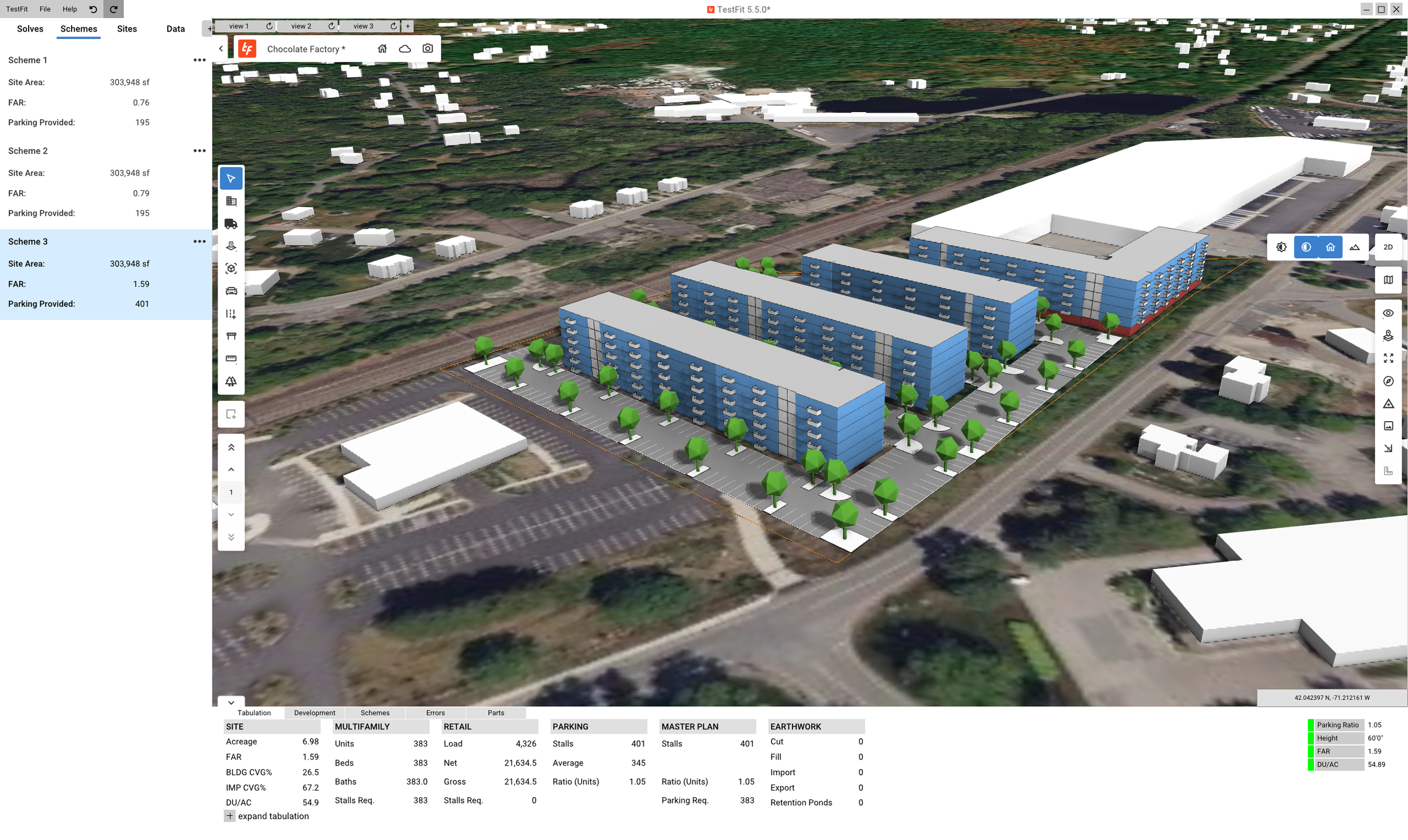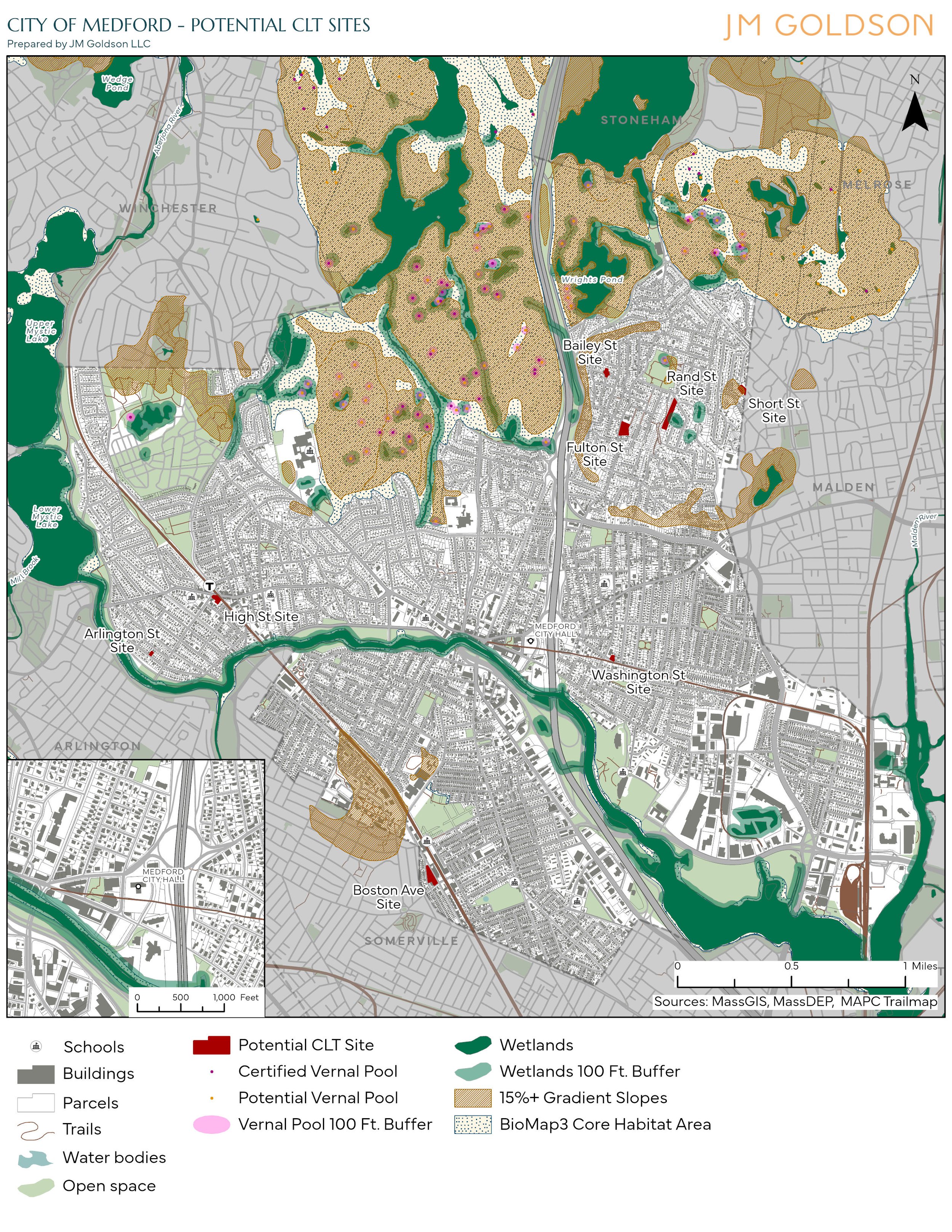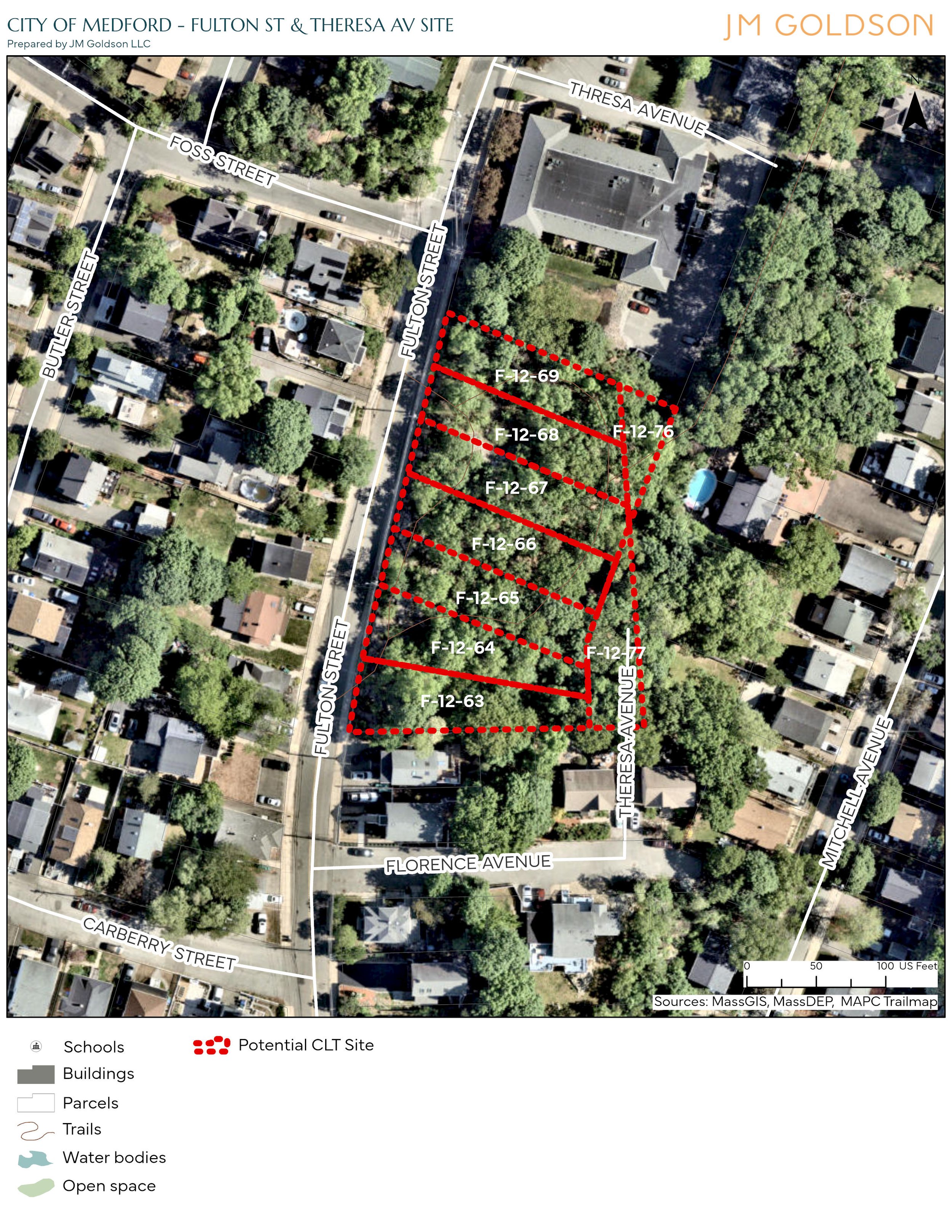test fit analyses
In my work at JM Goldson LLC, I have conducted test fit analyses to assess the feasibility of real estate and urban planning projects. To do this, I use Test Fit software, which allows for real-time modeling, as well as manual tools in 3D software. These analyses require establishing key assumptions—such as setbacks, building heights, and density—to define architectural volumes within which the number of potential housing units can be calculated.
Beyond estimating development capacity, this analysis is also used to evaluate the fiscal impact of new projects by calculating how much property tax revenue they would generate and how they would affect municipal income. Additionally, it assesses the project's profitability by determining whether it would be financially viable for a real estate developer. In this way, test fit analyses inform the technical feasibility of development and help visualize its economic and urban impact on the community.
What is a test fit analysis?
It is a tool used to study the feasibility of real estate projects and neighborhood development plans. Its primary goal is to estimate the number of housing units that can be built on a given site, considering urban planning regulations such as setbacks, building heights, and density.
Additionally, this analysis takes a holistic approach by evaluating both public and private benefits. Projecting municipal tax revenues and potential profitability for real estate developers serves as a key tool in urban planning and real estate development decision-making.

A scenario where a major real estate development was proposed for the Town of Mansfield, MA.

The urban test fit analysis results in different indicators to visualize the development's urban impact

The Town of Medford, MA, commissioned us to conduct several test fit analyses to create a new Community Land Trust

Different tests were carried out on different parcels to choose the most suitable one

It is possible to merge parcels to generate larger scale real estate developments